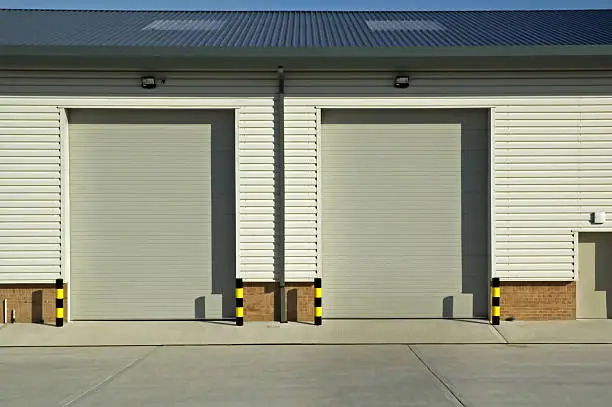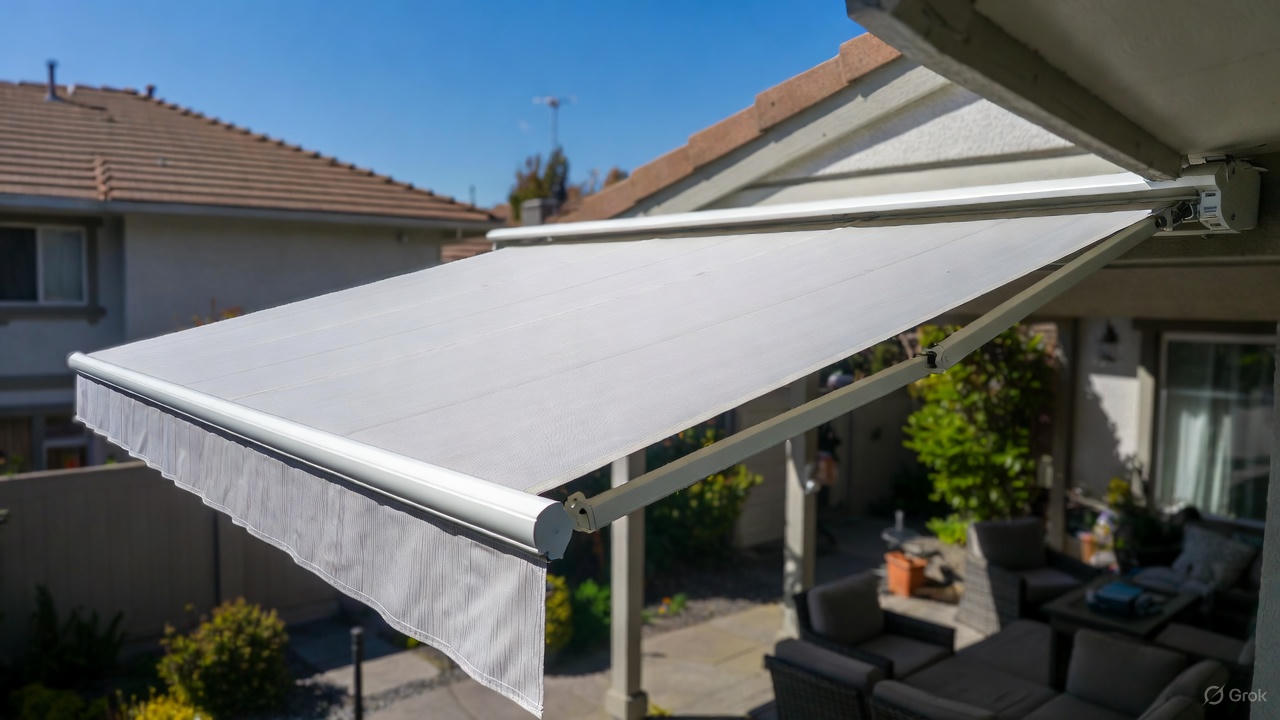How to Choose the Right Material for Rolling Shutters?
Choosing the right material for rolling shutters is a crucial decision for homeowners aiming to enhance security, energy efficiency, and visual appeal. The material impacts durability, maintenance requirements, energy efficiency, and weather resistance, influencing both the performance and lifespan of your shutters.
Understanding each material’s unique benefits ensures you select shutters that are compatible with your home’s climate, architectural style, and budget while providing long-term value.
Common Rolling Shutter Materials
Aluminum Roller Shutters
Aluminum shutters are lightweight, corrosion-resistant, and highly versatile. They provide excellent weather resistance, protecting homes from wind, rain, and snow, and enhance energy efficiency by minimizing heat transfer. Powder-coated finishes allow a wide range of color and design options, making aluminum suitable for modern and contemporary homes. Additionally, aluminum is low-maintenance, resistant to rust, and can be easily integrated with motorized operation and home automation systems.
Steel Roller Shutters
Steel shutters are renowned for their strength and security features. They can withstand significant force, making them ideal for high-security applications. Galvanized and stainless steel options enhance rust resistance and corrosion resistance, ensuring a long lifespan even in harsh climates. Steel shutters provide robust thermal insulation and can be customized with powder-coated finishes to improve both aesthetics and exterior durability.
PVC Roller Shutters
PVC shutters are lightweight, affordable, and resistant to moisture. They offer decent thermal insulation and are suitable for homes with moderate security needs. PVC is easy to clean and requires minimal maintenance, making it an excellent choice for busy households. Available in multiple color and design options, PVC can complement a variety of home exteriors. While less durable than metal, it provides a cost-effective solution with a reasonable lifespan.
Polycarbonate Roller Shutters
Polycarbonate shutters are extremely impact-resistant and lightweight. They offer high UV resistance and can be transparent or translucent, allowing natural light to enter while maintaining security. This material is perfect for areas where visibility and aesthetics are important, such as storefronts or sunroom windows. Polycarbonate shutters can integrate with motorized operation and home automation, providing convenience and modern functionality.
Wooden Roller Shutters
Wooden shutters provide a natural, classic look while offering excellent thermal insulation. They are aesthetically versatile, allowing for a variety of finishes and textures. However, wood requires regular maintenance such as sealing and painting to maintain durability and weather resistance. Treated wood can withstand environmental stresses better, making it a long-lasting option when properly cared for. It also contributes to natural sound dampening, providing acoustic insulation.
Vinyl Roller Shutters
Vinyl shutters are affordable, easy to maintain, and moisture-resistant. They offer basic thermal insulation and are suitable for moderate climates. Vinyl is available in a variety of colors and design options, and its flexibility allows it to adapt to different window sizes and shapes. Low upkeep and resistance to warping make vinyl an attractive choice for homeowners seeking convenience and reliability.
Performance and Protection Features
Weather and Environmental Resistance
Different materials offer varying levels of weather resistance, corrosion resistance, rust resistance, and UV resistance. Metal shutters like aluminum, stainless steel, and galvanized steel excel in harsh environments, while PVC and vinyl perform adequately in moderate weather. Choosing a material suited to your local climate ensures long-term durability and consistent performance.
Thermal and Acoustic Insulation
Materials such as wood and aluminum provide excellent thermal insulation, helping maintain indoor temperatures and reducing energy costs. They can also provide acoustic insulation, minimizing external noise and enhancing indoor comfort. Proper insulation is critical for energy efficiency, particularly in regions with extreme temperatures.
Fire Safety and Durability
Materials like steel and aluminum offer superior fire resistance, making them suitable for areas at risk of wildfires. Evaluating durability and lifespan is essential; metal shutters typically last longer and require less frequent upkeep, whereas PVC and vinyl may need replacement sooner. Wood’s durability depends on regular maintenance and protective treatments.
Environmental and Energy Considerations
Selecting energy-efficient and sustainable materials reduces long-term operational costs and environmental impact. Materials that provide thermal insulation help reduce reliance on HVAC systems, contributing to energy savings. Consider materials made from recyclable or environmentally friendly sources when prioritizing sustainability.
Operational Considerations
Manual vs Motorized Operation
Heavier materials like steel may be difficult to operate manually, making motorized operation preferable. Lighter materials such as aluminum, PVC, and polycarbonate can be operated manually or automated, offering flexibility. Assessing the shutter weight and intended usage helps determine the best operation method for your home.
Integration with Home Automation
Modern home automation systems allow motorized shutters to open or close based on timers, weather conditions, or remote control. Materials must be compatible with automation components to ensure smooth and reliable operation. Aluminum and polycarbonate are excellent for automated systems due to their lightweight and durable nature.
Maintenance Requirements
Material choice significantly affects maintenance requirements. Wood requires sealing, staining, or painting; metals need rust prevention and occasional lubrication; PVC and vinyl require minimal upkeep. Understanding maintenance helps forecast long-term costs and keeps shutters functional and aesthetically pleasing.
Lifespan Comparison
Metal shutters generally have the longest lifespan, often exceeding 20 years with proper care. Wood can last decades if regularly maintained, while PVC, vinyl, and polycarbonate provide moderate longevity. Choosing a material with a suitable lifespan ensures consistent protection and value over time.
Aesthetic and Design Considerations
Materials vary in color and design options. Aluminum, PVC, and vinyl allow customizable finishes that can match modern exteriors. Wood offers a traditional, classic appearance and can be stained or painted to suit architectural style. Polycarbonate provides a contemporary look with transparent or tinted panels. Selecting a material that aligns with your home’s design enhances curb appeal and overall property value.
Cost and Long-Term Value
Consider installation cost, ongoing maintenance, and long-term value. Metal shutters are costlier upfront but offer superior durability and security features. PVC, vinyl, and polycarbonate are more budget-friendly and low-maintenance but may have shorter lifespan. Balancing cost, performance, aesthetics, and durability is key to making a wise investment.
Choosing the Right Material for Your Home
Assess Security Needs
Evaluate local crime rates, entry points, and desired security features. Consider your family’s safety needs and the potential for break-ins. Steel and aluminum provide robust protection and are ideal for high-risk areas. Lighter materials like PVC and vinyl can be sufficient in safer neighborhoods. Also think about the ease of manual operation versus motorized operation, as heavier materials may require automated systems. Prioritize a material that balances security, durability, and ease of use to protect your home effectively while maintaining convenience
Climate and Weather Suitability
Choose shutter materials based on your local climate. Metals like stainless or galvanized steel resist corrosion in coastal areas, while PVC and vinyl suit moderate weather. Selecting the right material ensures weather and corrosion resistance and long-lasting protection for your home.
Insulation Priorities
Determine if thermal insulation and energy efficiency are top priorities. Wood and aluminum offer superior insulation for both cold winters and hot summers.
Maintenance and Upkeep
Factor in the level of maintenance requirements you are willing to commit to. PVC and vinyl require little effort, while wood and metals demand regular inspection and care.
Aesthetic Matching
Select materials and color/design options that complement your home’s architecture. Consider the overall exterior palette and future resale value.
Operational Preferences
Decide between manual operation and motorized operation based on window accessibility, shutter weight, and convenience. Lighter materials can be manual, while heavier ones benefit from automation.
Smart Home Integration
Choose materials compatible with home automation systems for programmable opening and closing, remote control, and integration with other smart devices.
Bottom Line
Selecting the right material for rolling shutters requires evaluating security features, weather resistance, energy efficiency, durability, maintenance requirements, and aesthetic appeal. Metals like aluminum, steel, and stainless steel offer strength, longevity, and excellent protection, while PVC, vinyl, and polycarbonate provide cost-effective, low-maintenance options. Wood provides timeless beauty with natural insulation.
Understanding these factors ensures homeowners choose the ideal material that meets functional, aesthetic, and long-term value needs, resulting in durable, secure, and visually appealing shutters.





